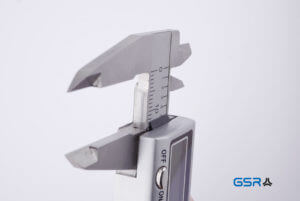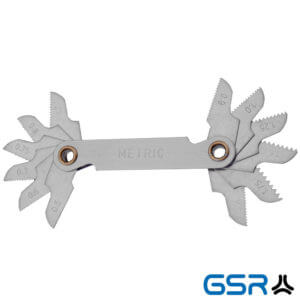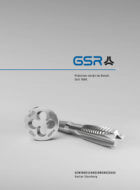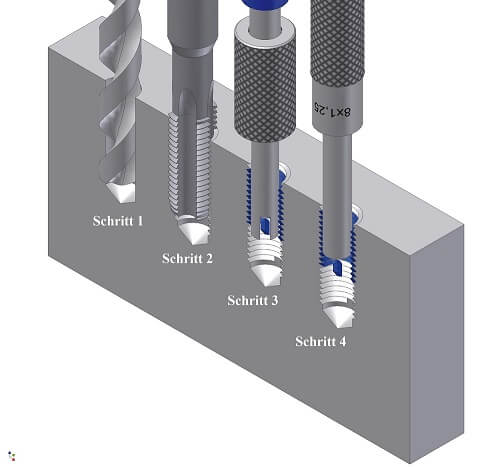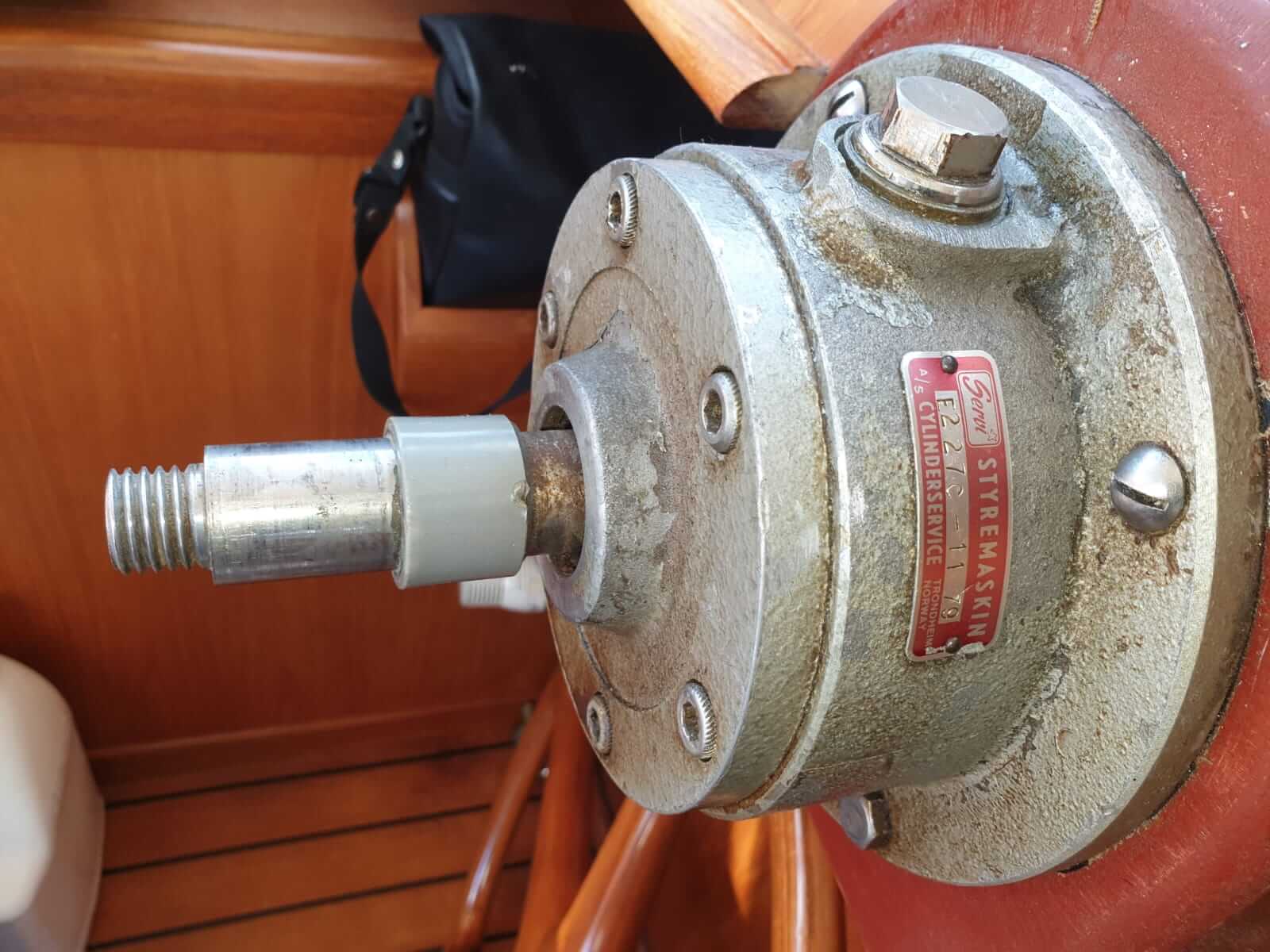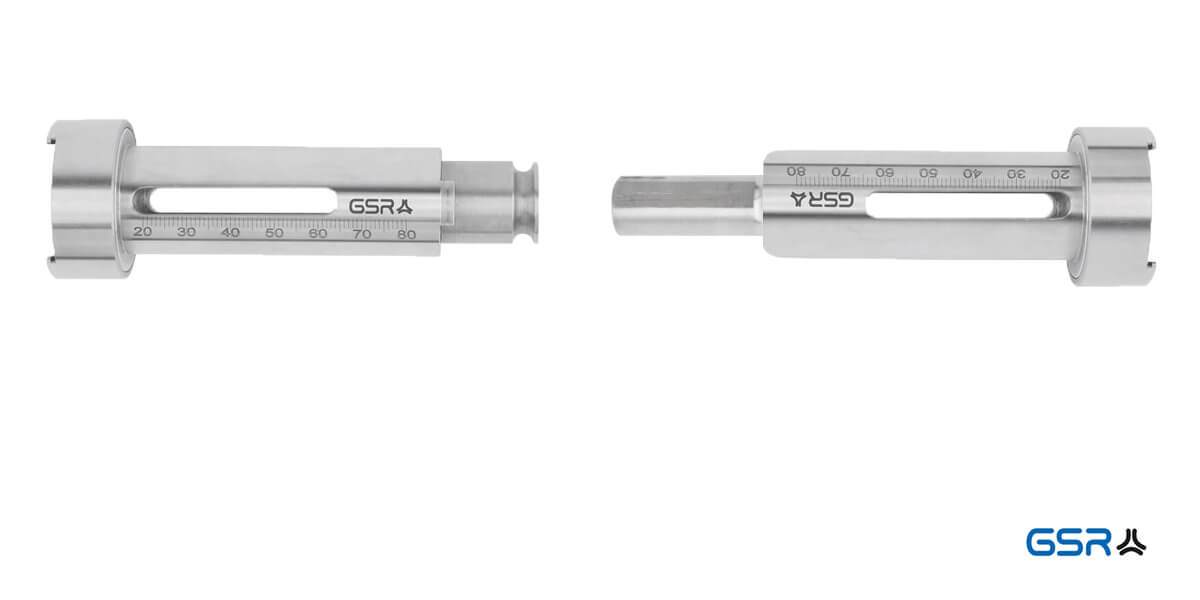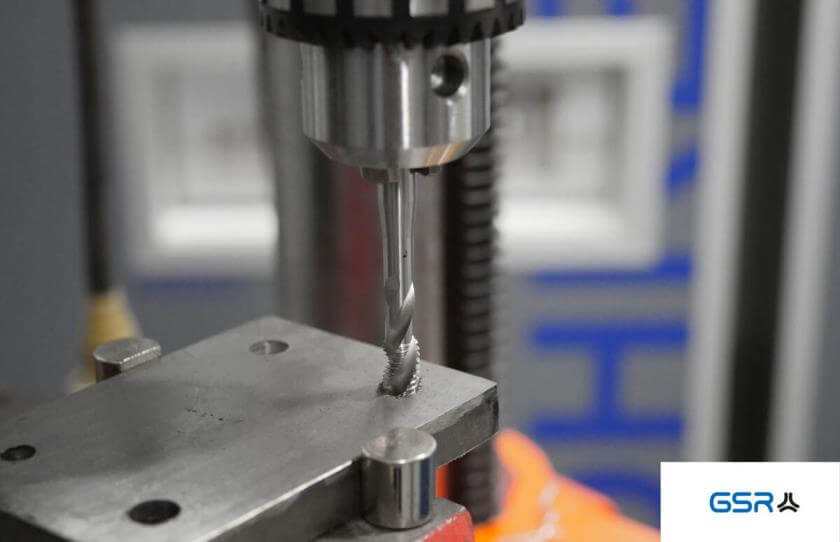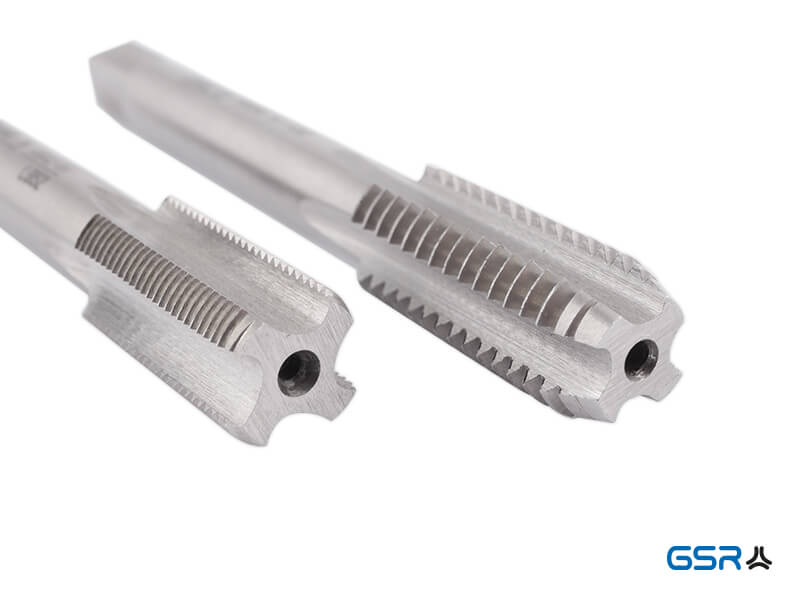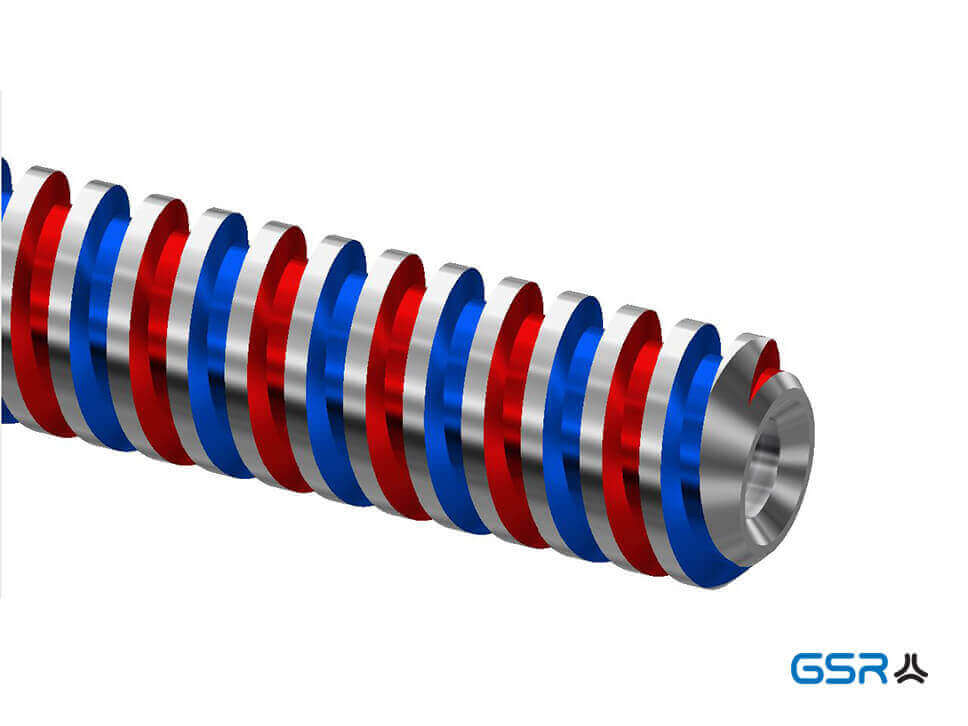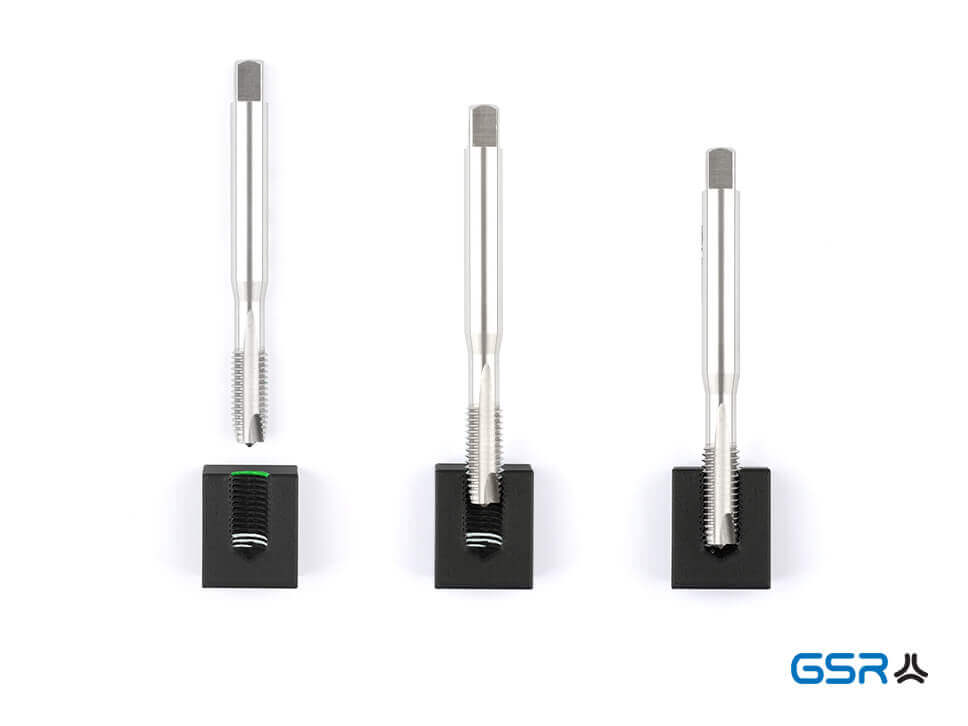Guide to thread determination No.5 for an objective thread MF 17 x 0.5
In 3 steps to thread determination (M 17x 0.05 metric fine): Today’s practical example of thread determination is about a lens thread. The customer needed the thread determination to produce an extension of the lens. The lenses are used by our client to digitize old films.
Task: please determine the thread and provide appropriate dies and taps.
For those who are loyal readers of our blog, some of the content will seem familiar. For all new readers, once again our step-by-step guide to determining lens thread.
Here we go with our fifth part of the thread determination!

How do we determine a thread on the objective lens?
This thread determination also requires 2 pieces of information. One is the thread diameter and the other is the thread pitch. These 2 values must always be determined on an unknown thread. We need exactly 2 tools for this. A caliper or a caliper gauge to determine the diameter. And the second tool we need is a thread template. With the help of the thread template we determine the pitch of the thread.
Both tools can be purchased for small money in our online store.
If you directly need a whole thread determination set, you can get them here.
In addition, you still need a thread table to interpret the two values.
For this you can use our app thread calculator.
Here again all the tools you need:
- Caliper / Caliper
- Thread gauge
- Table to look up the threads / App
Step 1: Determination of the thread diameter
We check the diameter with the caliper. For this purpose, we can use both a digital and an analog caliper. From experience, the diameter will not have a smooth value. We should also always check if the thread has the same diameter on the full length or varies. If the diameter at one end differs greatly from the other end, then it is most likely a tapered thread (not a parallel thread). However, if the difference is small, it is more likely wear or signs of use.
In our example today on the lens thread, you can see very well that the value is 17 mm. Partly there were fluctuations. For example, the digital caliper also once showed 16.81 mm or 16, 95 mm. At this point it is important to understand that the diameter and the pitch must be put in relation to each other.
We first note a diameter of 17 mm.
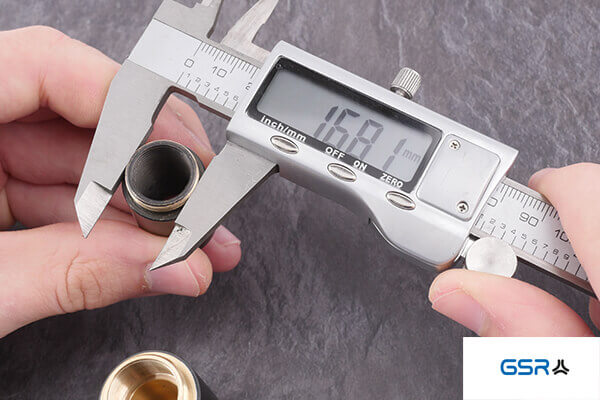
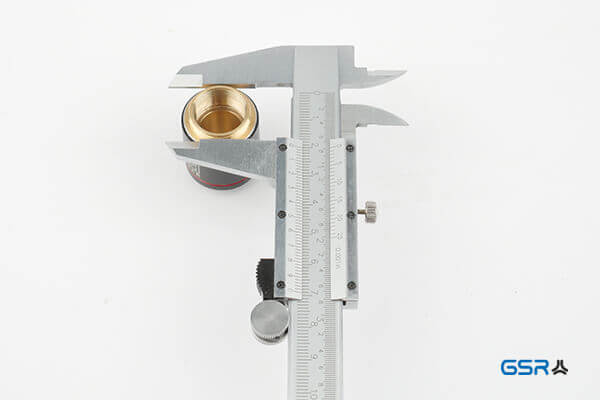
Step 2: Determining the thread pitch
Now we take the thread template and try to find the right template for the thread. The template must fit the thread like a counterpart. Dirt and wear on the thread could falsify the measurement result. Clean the thread if necessary. If you can, pick a spot on the thread where the threads are continuous and not crushed or worn.
In the picture you can see very well how dirty the thread actually is. However, we still have a challenge in our particular case. Furthermore, you can see very well in the picture that we only have a few threads to measure with the template.
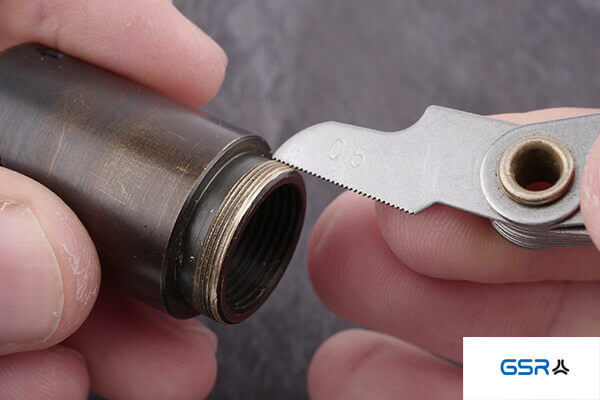
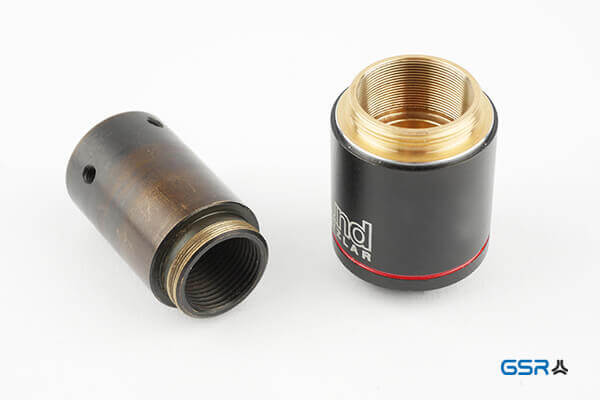
Fortunately, we still have the counterpart with an internal thread. The measurement was then repeated there.
We note the value 0.5 mm as a pitch
Here is another tutorial with the application of the thread template for internal thread as well as external thread:
You still have difficulties to determine the pitch? Please feel free to contact us via WhatsApp or e-mail. We will help you free of charge. For all others it continues now in the 3rd step!
3. Schritt: Werte zusammenführen und das Gewindebestimmen
So, es ist fast geschafft! Folgende Werte haben wir also ermittelt:
- Gewinde-Durchmesser: ca. 16, 81 – 16,95 aufgerundet sind das 17 mm
- Gewinde-Steigung: 0,5 mm
Jetzt müssen diese Werte in Relation zueinander gebracht werden. Die Recherche der Werte ist manchmal mit etwas Fleißarbeit verbunden. Schauen wir als erstes in die App oder in einer technischen Tabelle nach.
Gesucht wird ein Gewinde mit ca. 17 mm Durchmesser und einer Steigung von 0,5 mm. Zunächst schauen wir uns an, ob es die Kombination aus 17 x 0,5 überhaupt gibt und gängig ist. Und Voilà: Unter metrisch-feinen ISO-Gewinden findet sich die Gewindegröße MF 17 x 0,5 mm.
Wir überprüfen jetzt unsere Messung mit einem Gewindebohrer und einem Schneideisen.
Diesen Vorteil haben Sie natürlich nicht.
Tips for thread determination
If you don’t find what you’re looking for right away in your values, feel free to invest some time in research. These tips will help you roughly and will help you narrow down the search:
What do you know about the thread? Is it a pipe thread or a screw thread? Or is it a motion thread after all?
Where does the thread come from? A bicycle from France tends to point to a metric thread. If the thread is from the engine block of a vintage car from an American brand, then it is more likely to be an imperial thread. The origin of the thread may or may not be an indicator.
How old is the thread? If your answer is ancient, then there may not have been any standards for the thread yet and machinists made special threads.
Have you tried asking the manufacturer for the thread type? You’d be surprised how many customers don’t get that idea.
You are still unsure about your thread determination?
We will be happy to help you free of charge. In return, we’d be happy to share your story with others seeking help on the blog.
Other helpful sources:
- No.1 Thread determination with inch thread
- No.2 Determination of metric threads
- No.3 Thread determination for UN vintage thread
- No.4 Thread determination: UNF engine block of a Land Rover
- No.5 Thread determonation for objective lens treads
- How to use a thread template correctly: go to the tutorial on Youtube!
Did you like this article? Do you have any questions or feedback? Write to us.
By the way, you will find a large selection of taps in our store: www.gewindewerkzeuge.com





